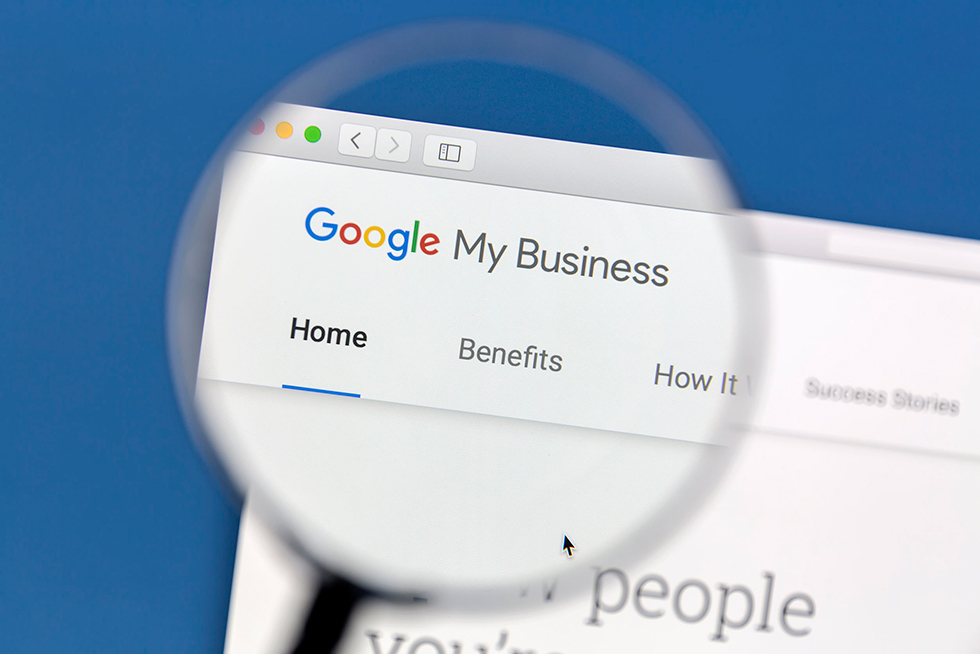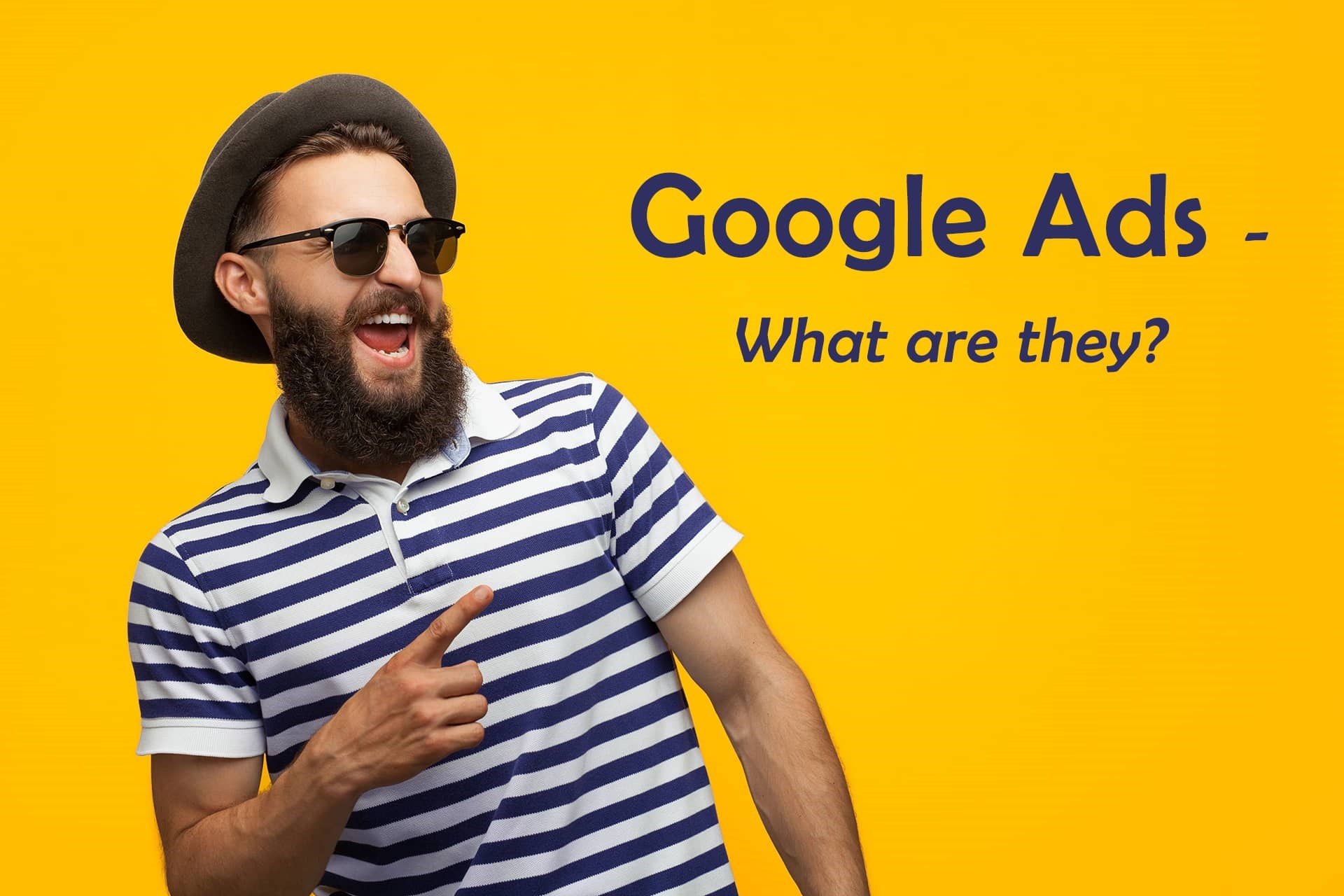You’ve probably heard of Google Ads or have a rough idea of what it is but want to know "how can it be used for my business?"
In this article, we answer the 3 most popular questions that so many people want to know and these are: ‘What are Google Ads for business’ and ‘Can Google Ads be used to find customers’ and 'How to set up Google Ads'. If you need help getting found in Google then contact us at aprompt website designers for a free chat to understand more.
Search, click, buy...
Google Ads, as the name suggests, allows you to advertise in Google. The way it works is straightforward - You create a Google ad to promote your business that includes some basic wording and a link to your website - and you select the time of day, the days and which keywords you would like your advert to appear for when someone searches in Google.
When someone searches within the time frames you set in Google, if the words they type in match your keywords, then your advert is likely to appear.
If your ad appears and someone clicks on it, you pay a small pay per click fee to Google.
The basic concept that a potential customer searches for what you offer, they click on your ad and buy from you is at the core of Google Ads, but using Google Ads can be more complex.
With both of these, adverts appear based on different criteria. Your advert can appear, for example, on a third party website after you have searched in Google. Imagine you are looking to buy a new TV and you search in Google. You might have noticed that the next website you visit that has ads, is showing an ad for the latest shiny new smart TVs!
A coincidence? It’s very unlikely. Google is using what’s known as retargeting to help increase the chances of you buying after you have searched for something you are interested in.
We won’t go through the details of using third-party website advertising and YouTube Ads here but it’s important to understand that they work differently and that they also add to the power of advertising with Google. Let’s get back to ads in Google search and how that works…

Keywords are, key
To appear at the right time and to get the best results, it’s important to select which words you appear for when someone is searching. The words or phrases you select are known as keywords or keyphrases. There’s no real difference between keywords and keyphrases other than phrases are a number of words used together such as searching for copywriters for websites rather than just the word copywriters.
Keyphrases often have more importance as it provides more context as to what’s being searched for. On its own, the word sunset doesn’t mean much, but if you want to know what time it gets dark then you need to use a phrase such as what time is sunset or when does it get dark.
How do keywords work?
Keywords in action - Let’s look at an example of how keywords work. Imagine a business that offers home extensions and conservatories decides to create a Google Ads campaign to promote its services or products.
A potential customer is considering having a new conservatory built for their home. They might go to Google search and type in conservatories or how much does a conservatory cost?
As soon as they type in those words (which we refer to as keywords or key phrases), Google will retrieve search results (displayed in SERP) that they believe will help the potential customer, and this includes any adverts at the top of the search results.
If set up correctly, the company promoting their conservatory installation services will have their advert appear in search results, and they will only pay Google if the potential customer clicks on their ad.
Keywords are important. In the example above, the company might not want to appear for keywords such as conservatory furniture or conservatory blinds if it doesn’t sell these products.
The business might, however, want to appear for a particular brand or type of conservatory.
How to start and set up Google Ads
1. Learning the terms
Keywords - These are the words you want to be found for in Google. Not your company name but your products or services.
Bid - This is the maximum amount you’re willing to pay when someone clicks on your ad. (Since, with Google Ads, you don’t pay to show up — only when someone clicks on your ad to visit your site or call you.)
Quality Score - This tells you how relevant your keywords are to your ad, and to your landing page (i.e. the webpage where people will be taken when they click your ad). A good Quality Score can lower your bid costs and improve your ad rank in the search results.
Ad Rank - This helps determine where your ad will show up, relative to other ads, when it's triggered to appear on Google. Your rank is determined using your bid, your Quality Score, and other factors.
CPC (cost-per-click) - The actual amount you pay when someone clicks on your ad. (You don’t necessarily pay your entire bid price for every click - that just sets up a range of possible costs-per-click you might pay.)
Conversion - A conversion takes place when someone who has clicked your ad goes on to take another action you’ve designated as important - like making a purchase, signing up for a newsletter, or calling you.
2. Organise your account
How do you set your account up for success from the beginning? Start by breaking down your products or services into categories and basing your account structure on those. (One good option is to mirror the structure you already use on your website.)
There are two levels of organization within a Google Ads account: campaigns (the higher level) and ad groups (the lower level — you can have multiple ad groups in each campaign). Think about campaigns as representing larger categories in your business, and ad groups as representing smaller, more specific sets of products or services.
The more focused and specific your ads are, the more people you can reach who are interested in exactly what you have to offer.
3. Set your budget
With Google Ads, you control how much you spend using two different settings: your daily budget and your bids.
Your budget is the amount you want to spend on each campaign per day. Your bid is the amount you're willing to spend on a keyword if someone searches for that term and then clicks your ad.
When you’re first starting out, it can be a good idea to spread your overall budget (i.e. the amount you want to pay for your whole account) evenly across your campaigns, until you get an idea which one work best for your business. But in general, you should set different campaign budgets and bid amounts based on your business goals. For example, if you want to draw shoppers to your “kids crafts” products one month, you should consider setting a higher budget for that campaign, and lowering the budget for another, less important one. You can change your budget and bids any time, so if something isn’t working, you can adjust to meet your needs.
In terms of setting bids for your keywords, you should balance picking a bid that will help get your ad a desirable ranking, while still staying within your budget. We’ll go into more detail in the “Pick your keywords” section below.
4. Pick your keywords
The goal when picking keywords is to choose terms that you think people will search for when they’re looking online for what you offer. In addition, you want your keywords to be as relevant as possible to the ad they trigger and to the landing page people will arrive at if they click that ad.
To help you get started, Google Ads comes with a free tool called the Keyword Planner, which can generate a sample list of keywords for your campaigns. (We recommend reviewing the list of suggestions and only using the ones that make sense for you.) The Keyword Planner can also help you estimate how much to bid on a particular keyword so your ad shows up in search results - this can give you an idea about whether certain keywords are too expensive for you to bid on, and which will fit within your budget. In general, the more competitive a keyword is, the more it will cost to bid on. When you’re first starting out, you may want to avoid high-competition keywords, so you don’t spend your whole budget on just a few clicks. Sticking with low-to-medium cost keywords can still get you a lot of exposure, and also help you test out how your campaigns are working.
Learn more about the Google Ads Keyword Planner tool
5. Set your keyword match types
“Keyword match type” is a setting in Google Ads that lets you further refine when your ad will show up on Google. There are 5 options:
Broad Match - The “broad match” setting shows your ad for searches that contain your keywords in any order, and for related terms. This option shows your ad in the broadest variety of searches and is the default setting for all campaigns.
Broad Match Modifier - This setting allows you to specify that certain words in your broad-match keyword must show up in a user’s search to trigger your ad. So, if your keyword is “high fibre wool yarn” and you wanted to make sure “wool” and “yarn” were always present in a search, you could ensure that by adding a plus sign (+) before those words. So, your broad match modifier keyword would be: high fiber +wool +yarn.
Phrase Match - This option shows your ad for searches that contain your exact keyword, or for searches that contain your exact keyword plus words before or after it. (i.e., if your keyword is “wool yarn” you might also show up for “fine wool yarn” or “wool yarn for sale near me.”) To choose this option, you should add quotation marks around any keywords, i.e., “wool yarn”.
Exact Match - When you choose exact match, your ad will only show if someone searches for the exact word or phrase you choose. For this option, put brackets around your keyword, i.e.: [wool yarn].
Negative Match - This match option allows you to exclude undesirable words or phrases from triggering your ad, weeding out irrelevant traffic. For instance, if you only sell high-end yarn, you might want to exclude words like “bargain” or “cheap.” You can do so by putting a minus sign in front of the words you don't want to show up for, i.e.: -cheap, -bargain.
Explore more about Google Ads keyword match types
6. Set your landing pages
Your landing page is where potential customers arrive after clicking on your ad. Choosing a page that’s relevant to your ad and keywords can help people find what they’re looking for more quickly: so, if your ad is promoting a sale on yarn, choose a landing page where that yarn is prominently featured, instead of just sending people to your website’s home page.
7. Decide which devices to show up on
Do your ideal customers search on a desktop, mobile device, or both? Are you more interested in reaching shoppers when they’re out and about, or people who want to make an immediate online purchase? As you set up your Google Ads account, consider which types of customers you want to connect with (and more importantly, the types of devices those customers use), so you can reach them. For instance, if you run a car repair shop and want to attract customers when they’re nearby and needing help, consider showing your ads only on mobile devices.
Learn more about Google Ads mobile ads
8. Write your ads
Your ad is the first impression many people will have of your business, so make sure it communicates that you have what they need. This is easiest when the ad actually contains the keywords people search for — which you can accomplish by breaking your campaign out into clear ad groups and writing unique ads for each (a yarn-promoting ad for your yarn keywords, and a craft-promoting ad for your craft supplies, for example). This will make your ads more relevant to potential customers, and also possibly increase your Quality Score.
It’s also a good idea to include a “call to action” in your ad: a clear, concise message that tells the reader what you’d like them to do after seeing your ad. Phrases like “shop now” or “learn more” can entice people to click on your ad, for example.
Finally, before you post your ad, look over it one last time to check for spelling or grammar errors.
9. Connect your account to Google Analytics
Google Analytics is a free way to get even more insights into how people interact with your ads and website. You don’t have to use Analytics to use Google Ads, though, so feel free to skip to the next step if you prefer.
While Google Ads can tell you how many people click on your ads, integrating Google Ads and Analytics lets you keep an eye on what those people do once they reach your website. For example, if people arrive at your site but then immediately click away, your ad might not be reaching the right people after all — or you might be taking them to to wrong area of your site. These insights can help you better organize your ads, and possibly get more out of your marketing budget.
Learn more about Google Analytics
10. Hit go and check back in
Good work! You’re ready to activate your campaigns — and see how they perform. Remember to check back in frequently to keep an eye on which ads and keywords are bringing you the most clicks and conversions. Over time, you should start to see which strategies are helping you meet your goals, and which still need tweaking.
You can refer to this Google Ads checklist any time you need to, and if you have a question that isn’t covered here, there’s more advice available in the Google Ads Help guide.
What does SERP mean?
SERP stands for Search Engine Results Page. And there are no pages more important to digital marketers and SEO copywriters than the search engine results page, or SERP. If you’d like to know how you can get your website higher up in SERP for the keywords you want to be found for, then give us a call and we can help.
Get in touch with our website copywriters in Wiltshire today.
Are there other ways to appear in Google?
You might be asking ‘Do I have to use Google Ads to appear in Google’?
When it comes to appearing in Google, there are alternatives to Google Ads. If your website is designed and built well with clean, un-bloated and without any unwanted code, hosted on good quality servers in the country you want to be found in and you've added top notch, keyword rich content, then you can appear organically in search results and the higher up the search results you appear, the more business you will attract.
SEO - Search engine optimisation (or SEO for short) requires planning and understanding of how Google works but it can save you money compared to the ongoing costs of Google Ads. Advertising with Google Ads can get expensive – and it basically comes down to how deep are your pockets! You also have to consider the keywords you’re using, the time of day you want your ads to appear and what days you want your ads to appear – all this makes a difference.
PPC - If you’d like experts to create your Google Ads and run your PPC (Pay Per Click) campaigns for you, then we can help by putting you in touch with a certified and trusted Google Ads professional PPC agency.
Google My Business
Another way to appear high up in search results for local businesses is to use Google My Business to promote your location. This is free for you to set up and run – it just takes a bit of time, but this is an area that can get overlooked by many companies.
So, if you’d like to know the potential of Google My Business pages, then get in touch with our websites designers in Wiltshire and we’ll be happy help.

Ready to be found in Google?
We hope you've found this article useful and do refer back to it whenever you need.
If you want to grow your business and we’re sure the answer will be YES! Then get in touch and we’ll help you boost your online business.
At aprompt, we love helping our customers to get found in Google. We design great websites that are optimised for Google and are attractive to website visitors. We can also write your content for you and provide SEO copywriting training too. So, if you would like to find out more about the support we offer, get in touch with our website experts today.


